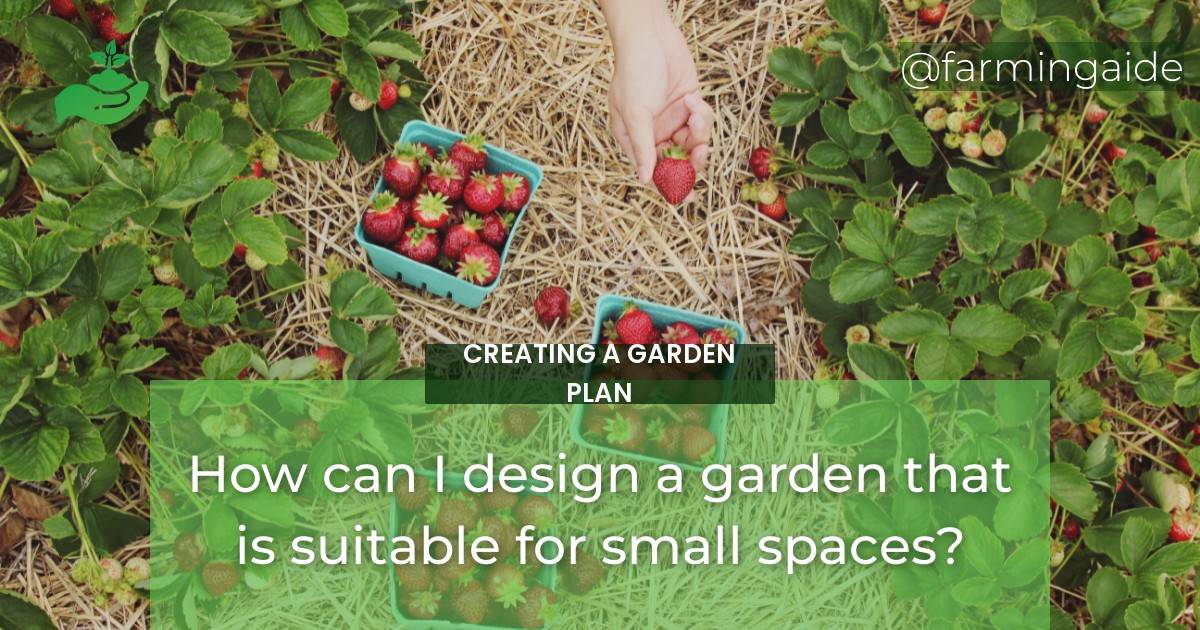Designing a garden for small spaces can be a challenge, but it’s also an opportunity to be creative and maximize the available space. A small garden can provide a beautiful and functional outdoor space, even in urban areas. In this article, we will discuss how to design a garden for small spaces, including assessing the space, choosing the right plants, garden design and layout, and maintaining your garden.
Assessing the Space
Understanding Your Space
Before you start designing your garden, you need to evaluate the space available for gardening. You need to identify the available light, soil quality, and water sources in the area. Some areas may be shaded, while others may receive full sun. Soil quality can vary greatly, and it’s important to know what you’re working with. If you don’t have access to a water source, you will need to plan for watering your garden.
Analyzing Your Needs
In addition to understanding your space, you need to determine what you want to grow and establish your garden’s purpose and functionality. Do you want to grow vegetables, herbs, or flowers? Do you want to create a space for relaxation or entertaining guests? Once you have determined your needs, you will be better equipped to design a garden that meets those needs.
Choosing the Right Plants
Plants for Small Spaces
Choosing the right plants is crucial when designing a garden for small spaces. You want to focus on plants that are compact and have a high yield. Some great options for small space gardens include:
- Tomatoes
- Peppers
- Zucchini
- Herbs
- Lettuce
- Strawberries
Container Gardening
Container gardening is a great option for small space gardens. It allows you to grow plants in a limited space and gives you more control over the soil quality and watering. When choosing containers for your plants, it’s important to consider the size of the plant and the size of the container. You want to make sure the container is large enough to accommodate the plant’s root system.
Vertical Gardening
Vertical gardening is another great option for small space gardens. It allows you to maximize the available space by utilizing walls, fences, and other vertical structures. When designing a vertical garden, it’s important to consider the weight of the plants and the structure you’re attaching them to. You also want to make sure the plants have enough support to grow vertically.
Maximizing Available Areas
Another way to maximize available garden space is to incorporate gardening into existing structures. For example, you can grow plants in hanging baskets or window boxes. You can also create a garden in a small corner of your yard or on a balcony or rooftop.
ALSO READ
Garden Design and Layout
Planning Your Garden
Before you start planting, it’s important to plan your garden layout. You want to make sure you’re making the most of your space and that your garden is functional and beautiful. When planning your garden, consider the following:
- The size and shape of your garden
- The placement of plants
- The spacing between plants
- The location of paths and walkways
Designing Your Garden
When designing your garden, you want to consider the principles of garden design. Some important principles to consider include:
- Balance
- Proportion
- Unity
- Harmony
- Color
By incorporating these principles into your garden design, you can create a beautiful and functional space that meets your needs.
Maintaining Your Garden
Garden Maintenance
Once your garden is planted, it’s important to maintain it properly. This includes watering, fertilizing, pruning, and pest control. You want to make sure your plants are healthy and productive. Regular maintenance will help ensure your garden stays beautiful and functional.
ALSO READ
What are Some Space-Saving Garden Design Ideas That Also Provide Privacy?
When planning garden design for privacy, consider using tall, narrow plants around the perimeter of your outdoor space. Incorporating trellises with climbing vines or bamboo screens can create a secluded oasis. Utilize vertical gardening techniques and built-in seating with raised planters to optimize space while maintaining privacy.
Conclusion
Designing a garden for small spaces can be a fun and rewarding experience. By assessing your space, choosing the right plants, designing your garden layout, and maintaining your garden properly, you can create a beautiful and functional outdoor space that meets your needs. Start planning your small space garden today and enjoy the benefits of fresh produce, beautiful flowers, and a relaxing outdoor environment.
RELATED ARTICLES:


